1. Introduction
In today’s electronics-driven world, a reliable SMPS power supply is essential for powering devices efficiently. From consumer gadgets to industrial machines, these power supplies ensure that devices operate smoothly without energy waste.
The SMPS power supply — Switch Mode Power Supply — has revolutionized the electronics industry by offering compact size, high efficiency, and adaptability. In this article, we explore the history, technology, applications, selection tips, and future trends of SMPS power supplies, helping engineers and buyers understand their critical role.
2. What is an SMPS Power Supply?
A SMPS power supply is an electronic device that converts electrical energy using high-frequency switching. Unlike linear power supplies, which dissipate excess energy as heat, an SMPS power supply rapidly switches on and off, storing energy in inductors and capacitors to provide a stable output voltage.
Key Advantages of SMPS Power Supply:
- High efficiency (80–95%)
- Compact and lightweight design
- Wide input voltage range
- Ideal for modern electronics
Linear vs SMPS Power Supply:
| Feature | Linear Power Supply | SMPS Power Supply |
|---|---|---|
| Efficiency | Low (40–60%) | High (80–95%) |
| Size & Weight | Large & heavy | Compact & lightweight |
| Heat Dissipation | High | Low |
| Applications | Audio, low-noise circuits | Most modern electronics |
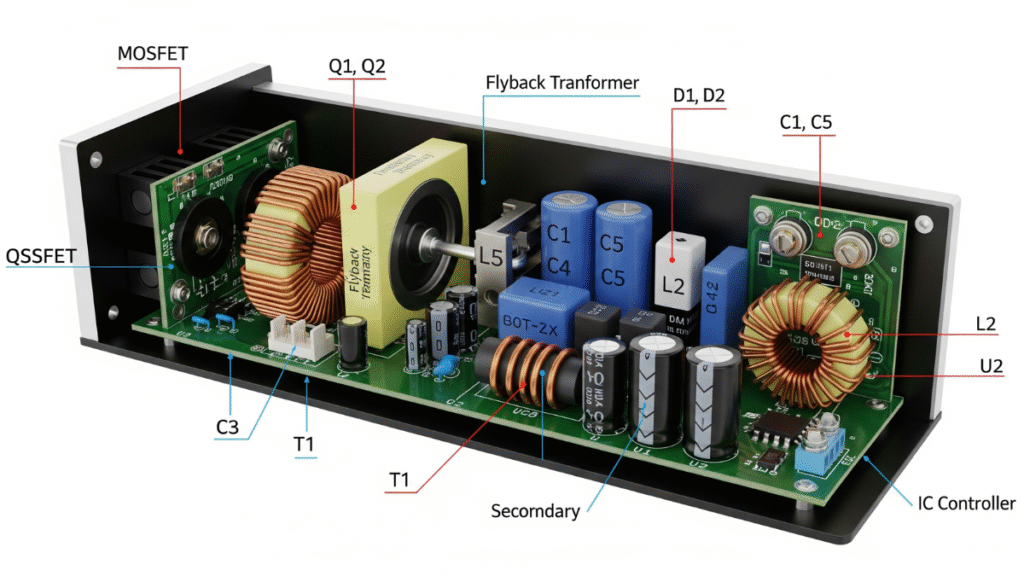
3. History and Evolution of SMPS Power Supply
The SMPS power supply has evolved over decades:
1960s – Early Experiments: Transistor-based switching regulators replaced bulky vacuum tubes, mainly in aerospace and military applications.
1970s – Industrial Adoption: High-speed transistors enabled commercial SMPS designs for computers and consumer electronics.
1980s – Mass Market Growth: Personal computers and consumer devices required compact, efficient power solutions. SMPS became the standard choice for desktop PC power supplies.
2000s – Energy Efficiency: Global standards like Energy Star and 80 PLUS certifications promoted high-efficiency SMPS power supplies.
Today – Smart and Green: Modern SMPS power supply designs integrate digital control, PFC (Power Factor Correction), and materials like GaN and SiC for better performance and energy savings.
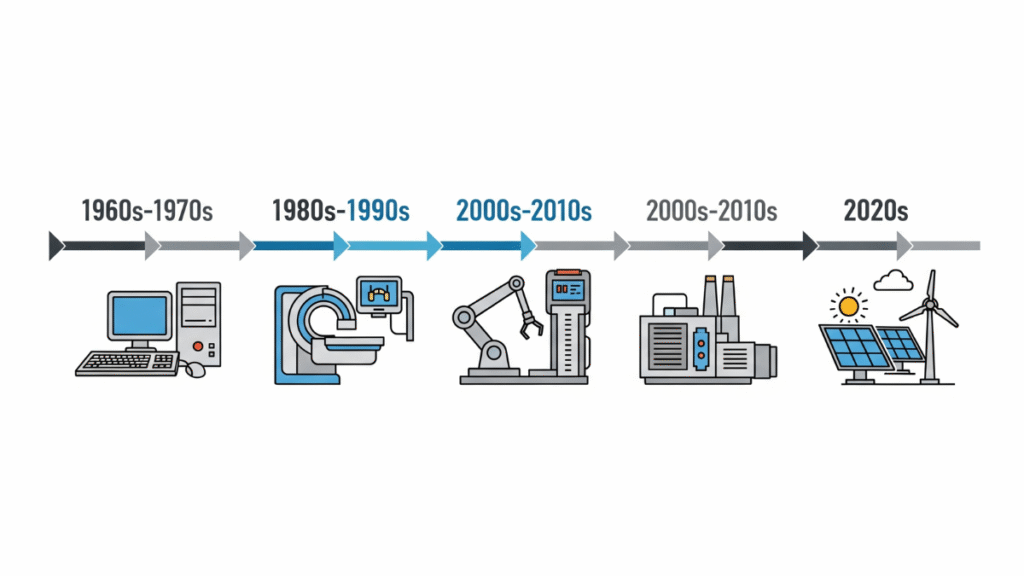
4. How an SMPS Power Supply Works
An SMPS power supply works by converting electrical power efficiently through high-frequency switching:
- Input Stage – AC or DC enters the supply.
- Rectification & Filtering – Smooths input voltage.
- High-Frequency Switching – MOSFET or IGBT switches rapidly using PWM or PFM control.
- Transformer Conversion – Adjusts voltage levels through a compact transformer.
- Output Stage – Rectifies and filters AC back to DC.
- Feedback Control – Maintains stable output voltage.
Common SMPS Topologies:
- Buck (step-down)
- Boost (step-up)
- Flyback (low-to-medium power)
- Forward (medium-to-high power)
- Half-Bridge / Full-Bridge (high power)
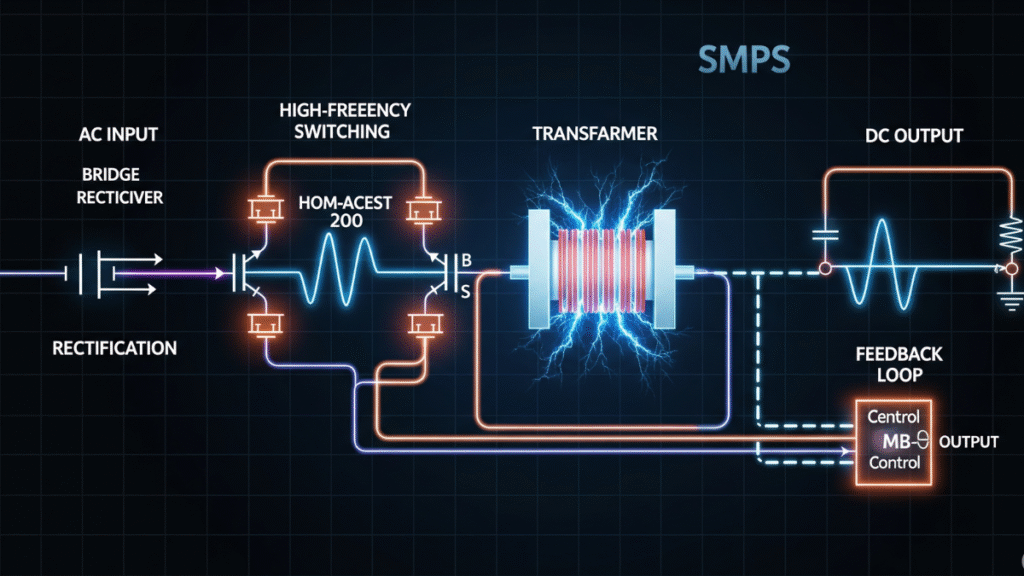
5. Applications of SMPS Power Supply
SMPS power supplies are used in:
- Consumer Electronics: Laptops, smartphones, gaming consoles.
- Medical Devices: Patient monitors, ventilators, imaging equipment (IEC 60601-1 certified).
- Industrial Automation: Robotics, PLCs, CNC machines.
- Telecom: Routers, PoE switches, base stations.
- Renewable Energy: Solar inverters, battery storage systems.
- Automotive: EV chargers, infotainment systems.
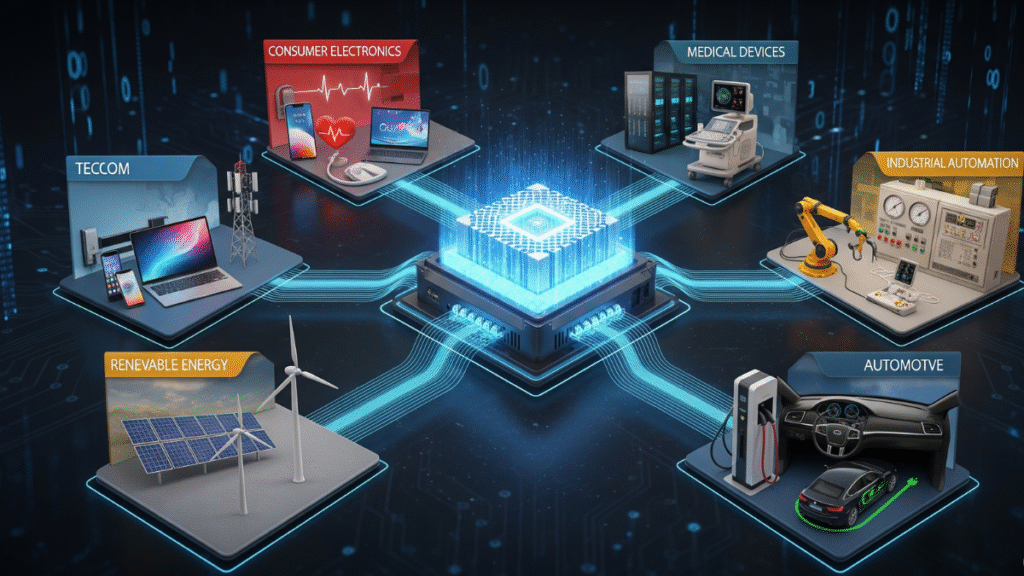
6. How to Choose the Right SMPS Power Supply
When selecting an SMPS power supply, consider:
- Output Power & Voltage/Current – Match device requirements.
- Efficiency – Higher efficiency reduces energy loss.
- Input Voltage Range – Wide-range inputs allow global use.
- Certifications – UL, CE, IEC; medical devices need IEC 60601-1.
- Environment – Temperature, humidity, and IP rating.
- Protection Features – Over-voltage, over-current, short-circuit, thermal protection.
- Form Factor – Ensure it fits the device design.
7. Future Trends in SMPS Power Supply
The future of SMPS power supply technology is driven by efficiency, compactness, and intelligence:
- Wide Bandgap Semiconductors: GaN and SiC allow higher switching frequencies.
- Digital Control: Adaptive algorithms optimize power delivery.
- Higher Power Density: More output in smaller sizes.
- IoT Integration: Remote monitoring and smart management.
- Eco-Friendly Designs: Compliance with global energy-saving standards.
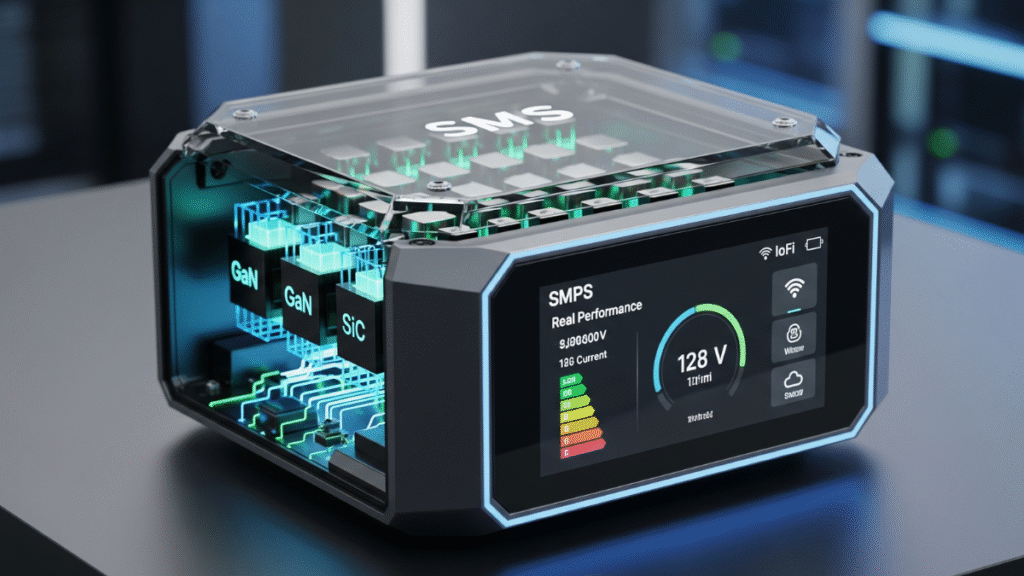
8. Conclusion
The SMPS power supply has become a cornerstone of modern electronics. From small consumer gadgets to critical medical and industrial systems, these power supplies ensure reliability, efficiency, and compact design.
Choosing a high-quality SMPS power supply is crucial for device performance and longevity. Our company provides a wide range of SMPS-based power adapters that meet global safety standards, ensuring reliable and efficient operation in medical, industrial, and consumer applications.




